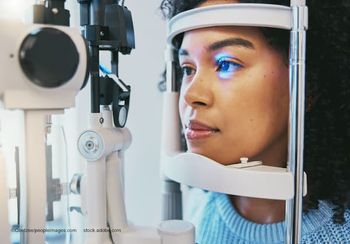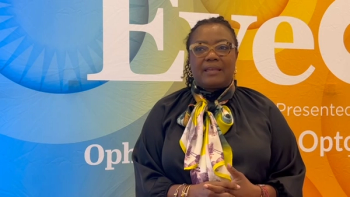
Cell therapy shows promise in glaucoma
Encapsulated cells that excrete ciliary neurotrophic factor (Renexus, Neurotech) into the back of the eye are showing promise as a treatment for glaucoma in a multicenter phase II clinical trial, says Jeffrey L. Goldberg, MD, PhD.
Humphrey Visual Field (HVF) values improved in eyes implanted with the capsules, but declined in eyes treated with sham surgery and in fellow eyes, said Dr. Goldberg, professor of ophthalmology, Stanford University, Stanford, CA.
The results are a step in the direction of reversing the vision loss in glaucoma, said Dr. Goldberg, who presented the preliminary findings at the Glaucoma 360 New Horizons Forum of the Glaucoma Research Foundation.
He was one of four researchers on a panel describing initial progress in helping damaged cells recover or regenerate, rather than merely reducing the IOP that typically causes the damage.
Other promising initial results presented on the panel included insulin as a growth factor to regenerate retinal ganglion cell dendrites and synapses, injection of trabecular meshwork stem cells to improve outflow and reduce IOP, and cell transplantation to replace retinal ganglion cells.
The work on ciliary neurotrohic factor was farthest along in the research presented here. One of several neurotrophic factors produced by neurons or Mueller cells, ciliary neurotrophic factor is expressed in the retina under stressful conditions such as experimental ocular hypertension and optic nerve trauma, and it can protect photoreceptors.
Studies in animals suggest it can vision loss due to photoreceptor death.
To test the molecule in humans, researchers created capsules contains human cells genetically modified to secrete ciliary neurotrophic factor. To implant them, they cut through the sclera, inserted the capsules into the vitreous and out of the visual axis of the study eye, and secured them with sutures.
In a phase I, single-center, investigator-initiated open label trial, there were no serious adverse events and no effects on IOP, Dr. Goldberg said.
Eleven patients with primary open angle glaucoma experienced slight improvements in their HVF values and their retinal nerve fiber layers thickened compared to fellow eyes.
"We know thinning is not good, but we don't know technically that thickening is good," said Dr. Goldberg.
For the phase II trial, Dr. Goldberg and colleagues recruited 54 patients with glaucoma, evidence of progressive retinal ganglion cell dysfunction and degeneration, and clinically stable glaucoma with IOP less than 21.
They implanted the capsules in half the patients and performed sham surgery with no implant in another half. They promised patients who received the sham surgery an opportunity to receive the implant for the second year of the trial.
After one year, pointwise linear regression results in 85 eyes of 43 patients showed that the eyes receiving the implant were 58% less likely to have significantly progressing points (p < 0.001). Mean deviation showed a trend toward improvement in the eyes receiving the implant, but it was not statistically significant (p = 0.16).
Optical coherence tomography results in 72 eyes of 36 patients showed an average retinal nerve fiber layer more positive slope of 3.4 µg/year compared with sham eyes. This result was statistically significant (p = 0.002.)
More positive mean deviation slopes were associated with more positive retinal nerve fiber layer slopes, which was "borderline significant" (p = 0.07). More positive pattern standard deviation slopes were associated with more negative retinal nerve fiber layer slopes, which was significant (p = 0.03).
Conclusions about efficacy could not be drawn from these preliminary findings, Dr. Goldberg said.
But at the very least the results showed the neuroprotection and neuroenhancement therapeutic candidates can be studied in glaucoma patients.
And the results showed the potential for merging therapeutic testing with biomarker exploratory endpoints for cross validation, he added.
Newsletter
Don’t miss out—get Ophthalmology Times updates on the latest clinical advancements and expert interviews, straight to your inbox.



















































.png)


